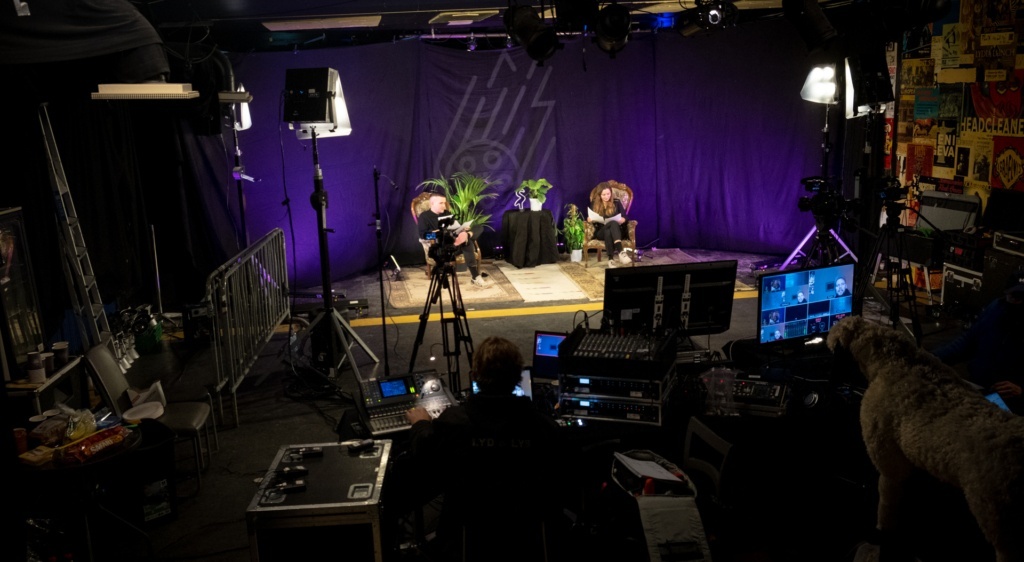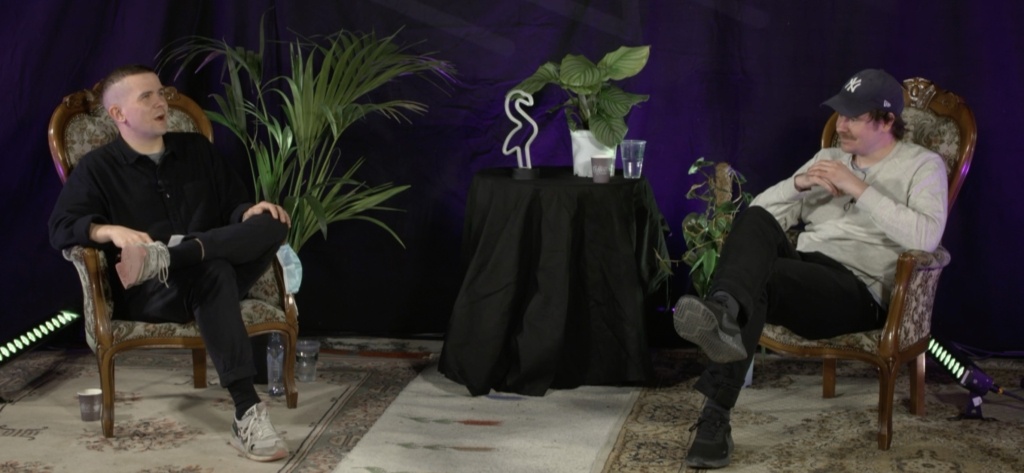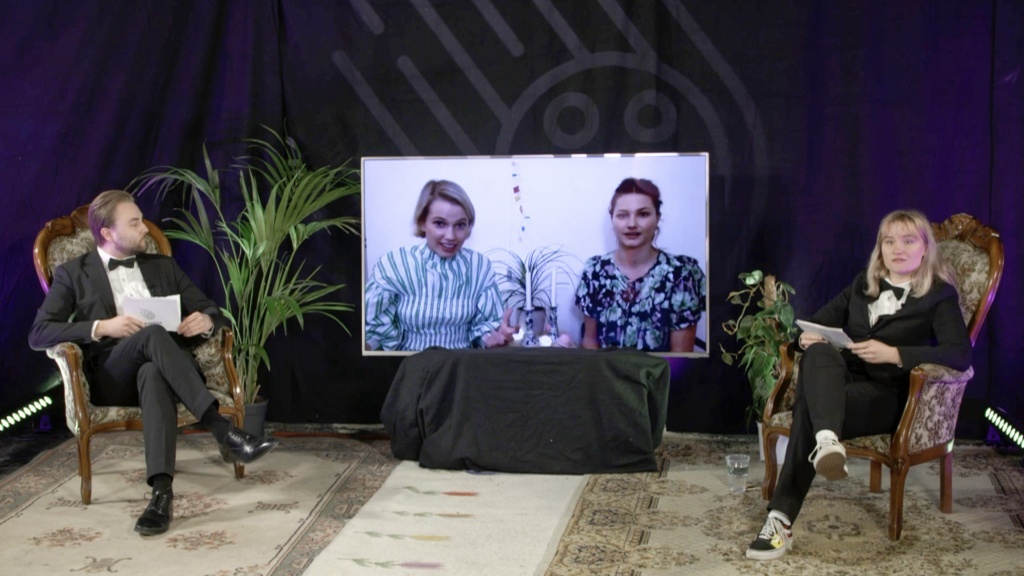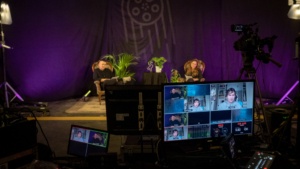Just before Easter, the second edition of Amandus ONLINE was held. Live from a custom-built studio in Lillehammer, we streamed over 20 hours of content, and even more could be seen on our digital festival platform. Here is how it went.
As previously announced, the festival is split into two main parts this year, where the national festival for youth filmmakers under the age of 20 (just called the Amandus Film Festival) was kept in Lillehammer the week before Easter, and the part directed towards film students and young filmmakers from 20-26 (previously known as Amandus STUDENT and Amandus OPEN), will be held in late September.
The film submission is still open for this competition, and you can submit your film until June 20.
This article is a summary in English of the Norwegian Amandus Film Festival.
This has definitely been a difficult year to plan and organize a festival, with rapidly changes in rules and reccomandations throughout the winter and the spring. The festival went through at least three big changes in how it was going to be organized, before landing on the way we ended up doing it, in addition to many small adjustments. Even though this is the second time making an online festival, the ambitions were higher, the organizational model was changed and a lot of things were different in what we could and was expected to do.
How it was done
One of the struggles with an online event with a lot of things going on, is that it just doesn’t work the same way as a normal, physical event, which also makes it difficult to communicate. Some parts are going live at specific time schedules, some things you can see all the time, and other things are live, but can be put at different times. To try to make sense of it all we landed on two main parts the audience could focus on:
- Amandus LIVE
The actual live stream, with programs (shows) going at specific times. - Amandus ON DEMAND
All the films and recordings of previous live shows.
In addition, we had a few physical events planned, but those were mostly cancelled due to new restrictions the same week, and there were a few special workshops that didn’t fit into these categories and were held outside.

What you could experience
On the On Demand platform you could see all the nominated films, in addition to three specially curated programs called “Runner-ups”, “Young voices about Corona” and “International Youth Film”.
The live stream followed a tight schedule and could be compared with a fully planned TV-show, with some parts going live from our custom-built studio in Lillehammer, and some parts being prerecorded material. Over three days, and well over 20 hours of streamed content, we produced a pretty complex festival show, with many live seminars, discussions, interviews, masterclasses, a film quiz, and around 40 people being involved through video conference.
Here one could get an introduction to short film economics with Ravn Wikhaug, film producer and adviser at the Norwegian Film Institute, you could get an overview of how a filmmaker creates stories, by director Alexander Turpin, hear how one of the most famous film critics in Norway, Einar Aarvig, considers what rating to give a film, learn about foley sound production from “the Foley Girls” Yvonne Stenberg and Therese Næss Diesen, and get a glimpse behind the facade of the biggest reality shows at moment by Maria Bringsjord. You could also meet the director Daniel Fahre and one of the main actresses Maja Christiansen from the hit show Rådebank, meet one of the country’s most successful cinematographers, Sturla Brandt Grøvlen, hear from director Yngvild Sve Flikke and actress Kristine Kujath Thorp from the film Ninjababy, and get an in depth interview with filmmaker Henrik Martin Dahlsbakken.

On our On Demand platform you could also see an early screening of the film Ninjababy, in addition to cinematographer Brandt Grøvlen’s most impressive film, Victoria (2015) – a complete feature film shot in one take throughout the streets of Berlin, which won him a Silver Bear at the Berlinale Film Festival. Both of these films were actually also possible to see at the cinema in Lillehammer.
Still, the most important parts of the live stream were the program focusing on the nominated films and the young filmmakers. Our panel of film experts (artistic director at Vega Scene, Truls Foss, filmmaker Frøydis Fossli Moe, and film critic Einar Aarvig), talked in depth about the films we had seen, in conversation with the filmmakers who joined in on Zoom.

And as a finale of the festival, we came to the prestigious Amandus Awards Ceremony. Our two main hosts (actresses Thea Sofie Loch Næss and Iben Akerlie) had to join in through a television in the studio, due to the latest travel restrictions, but two of our staff members took on the task to guide us through the show from the studio.
The main jury, consisting of Oda Bhar, Elisa Fernanda Pirir and Jørgen Bergundhaugen, awarded prices to seven films and two honorable mentions. In addition, a winner in the script competition was announced as well as an audience award. See the complete list of winners at the bottom of the article.

In addition to all that we had a script workshop, led by screen writer Arild Tryggestad, for a few participants, and a “feedback workshop” with film director Alexander Turpin who gave a few filmmakers in depth feedback on their films.
The 2021 Amandus Film Festival was a challenging edition to make, but we are still happy about the end result. That said, despite getting an expertise in pandemic film festival production, we really, really hope to return to a more normal festival in September and next spring.
Most of the content is still available throughout April if you want to check it out, though the content is mostly in Norwegian.
Winner films:
Amandus JUNIOR (13-16 years)
- Best animation film: ELEMENTER (Elion Sadiku)
- Best live action film: LAST NIGHT I HAD THE STRANGEST DREAM (Agnes Kippersund Frogner, Birk Rønningsbakken Groven)
- Honorable mention live action: HERR STERK
Amandus UNG (16-20 years)
- Best animation film: ANNOYING FLY (Jon Mika Eskonsipo)
- Best documentary: KONTRASTEN (Elise Augestad)
- Best music video: THE BREAD-HEADS – GREEN-HAIRED ALIEN (Stella Marie Sillitoe)
- Best fiction film: NESTE DØR (Sander Lid Fiskå)
- Honorable mention fiction: ET OFFENTLIG TOALETTS HEMMELIGE LIV (Konstanse Fjellvang)
- Technical Prize: cinematography for PESTECIDE (Elise Eriksen)
Amandus YTRING screen writing competition:
- “Mørke Tider” by Odin Larsen
Audience Award:
- GUTTA FRA FILM (Truls Hj. Steinsvik)
